► New Peugeot 3008 goes hybrid
► Joins existing electric e-3008
► Stylish and cool, but is there more to it?
Disappointment comes in many forms, and in the car world, it can be expressed as the Peugeot e-3008. It was meant to be a shining star from Stellantis as the first car built on its glittering new STLA-medium platform that the firm says will underpin two million new cars annually in the coming years. Peugeot also described it as its ‘most significant launch in recent years’.
But for such an important car, the result was underwhelming. Heavy (2.1 tonnes!), not very comfortable and not spacious enough in this class, the e-3008 was well off the pace.
For the first few months of the 3008 being on sale, only the electric model was available – demonstrating the overarching importance of shifting as many EVs as possible to reach the ZEV mandate targets. But new versions are now arriving, including a new mild-hybrid we’re now getting our hands on.
Could this be the magic wand the Peugeot 3008 needed, and show it can compete with the best family crossovers after all?
At a glance
Pros: Stunning interior, efficient hybrid system, drives significantly better than the e-3008
Cons: How such a big car have such little space in it, weak gearbox, quite expensive
What’s new?
The 3008 adopts all the party tricks of its electric sibling, including the striking ‘Panoramic i-Cockpit’ that merges together a large touchscreen with a digital instrument cluster in one piece of curved glass. It’s nothing new, of course, with BMW and others doing similar for several years, but Peugeot’s implementation (the 3008 is the first car to get it) is especially impressive to look at.
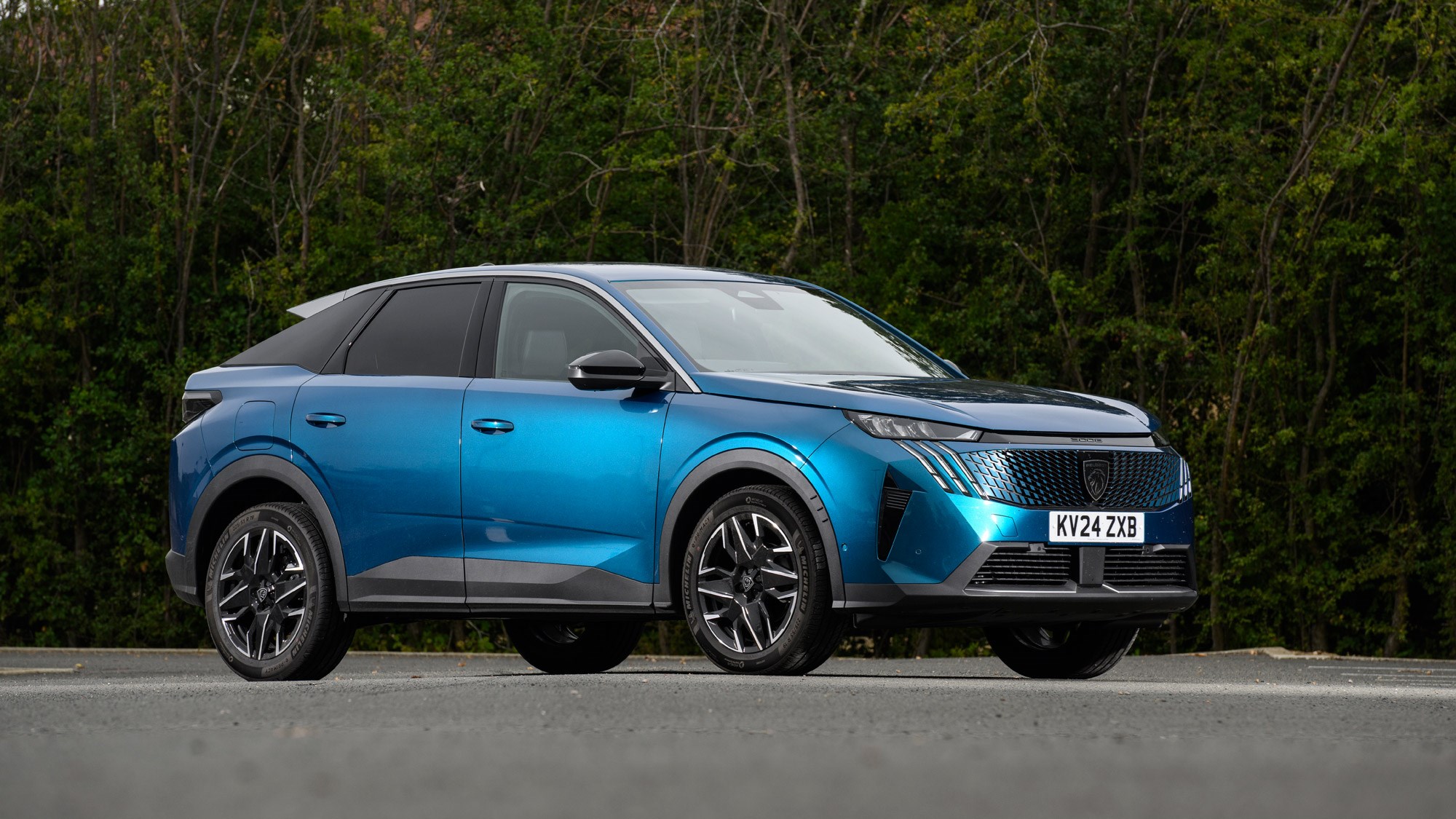
It’s a bold thing to look at outside, too, with no grille so to speak of, but rather a body-coloured textured front end. It also adopts the trendy coupe-like sloped roofline that buyers seem to love. Peugeot calls it a ‘fastback SUV’, possibly one of the worst phrases I’ve ever heard.
What are the specs?
While Peugeot will introduce a new plug-in hybrid version of the 3008 in 2025, for the time being there is only the choice of one mild-hybrid if you don’t want to go down the electric route.
It’s currently being rolled out across the Stellantis portfolio and sees a 1.2-litre turbocharged petrol engine paired with a small 0.9kWh battery. Total output is 136hp and 170lb ft of torque, with this being delivered to the front wheels through a new six-speed dual-clutch automatic gearbox that incorporates an electric motor. Performance is quite leisurely, with 0-62mph taking just over 10 seconds and a top speed of 125mph.
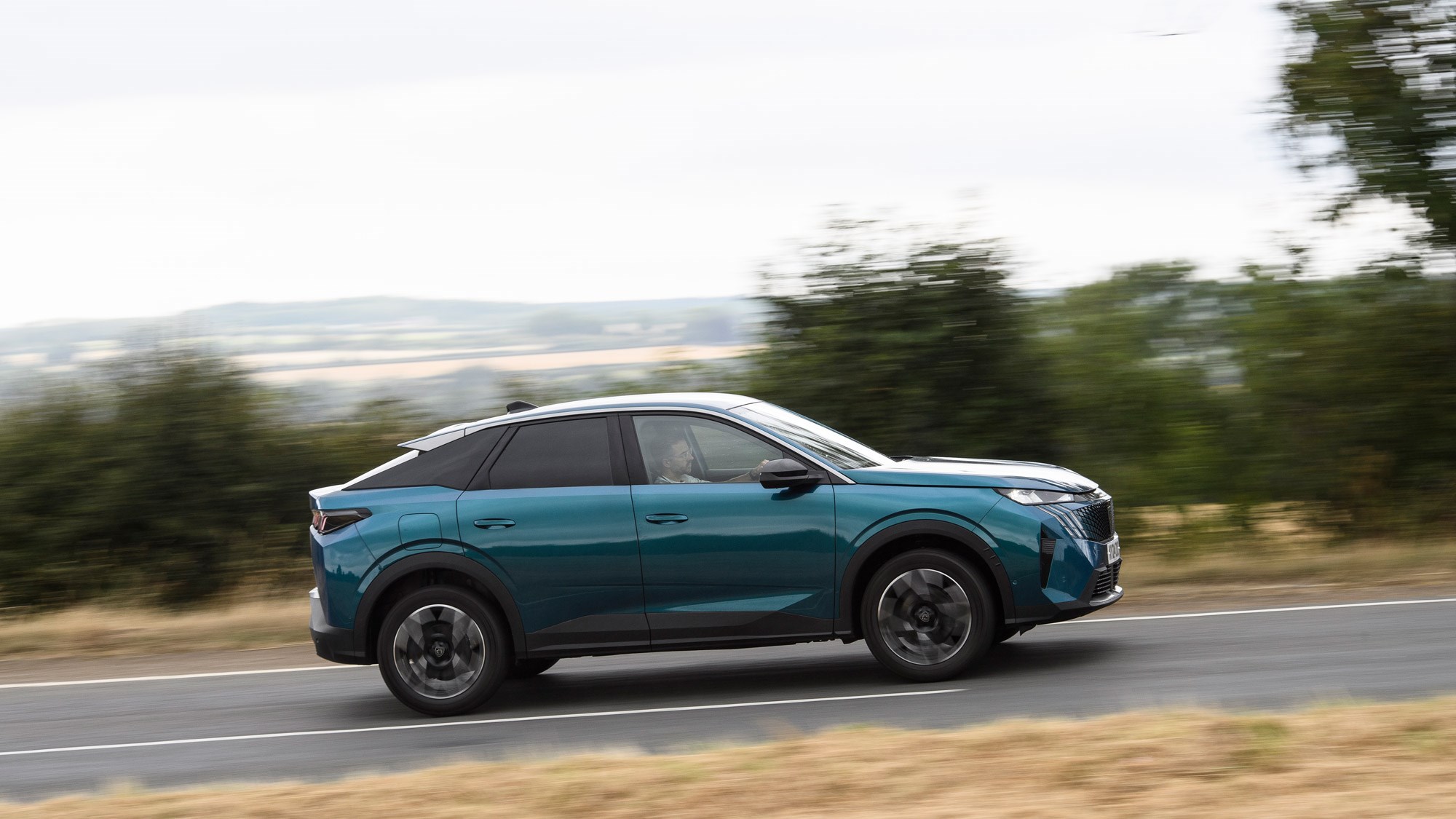
Efficiency is more of the selling point here, with Peugeot claiming it can travel up to 50 per cent of the time around a town on city with the engine switched off. It doesn’t quite live up to the claim but expect 15 to 20 per cent of a typical journey to be completed on electricity, bringing some noticeable fuel savings. I saw 50mpg on a steadier jaunt down the A1, and over 500 miles across motorway, urban and rural driving it averaged 45mpg. It’s not bad at all for a vehicle of this size, while CO2 emissions of 124g/km are lower than some ‘full’ self-charging setups, such as the Hyundai Tucson.
How does it drive?
This mild-hybrid is a colossal 535kg lighter than an electric e-3008 at just shy of 1.6 tonnes, and unsurprisingly is a big improvement to drive. The ride, despite its larger 19-inch alloy wheels (the smallest you can get) is much more compliant, handling all but the sharpest bumps with ease. Refinement is also a strong point, with an acoustic windscreen helping to quieten road noise. If you’re on a rougher stretch of surface, the vibrations from the road are quite pronounced, however.
I’d not go as far to call it fun, but body control is impressive for an SUV with the 3008 staying flat through corners, and with plenty of grip. The small steering wheel naturally makes it seem a bit more engaging, too. An optional ‘Advanced Grip Control’ traction system is also available, which brings additional driving modes for sand, snow and mud, as well as all-season tyres.
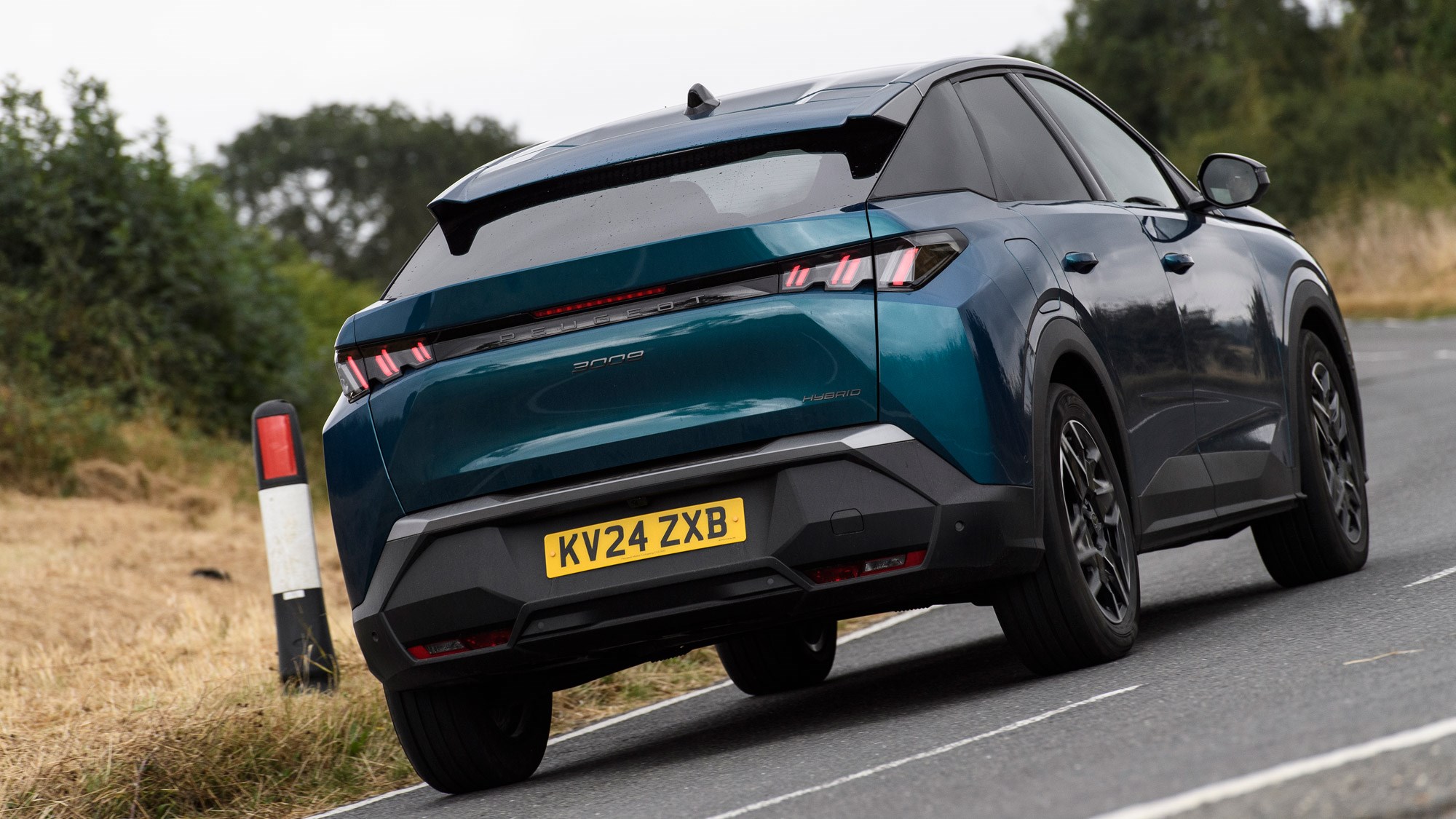
I’m not sold on the mild-hybrid system, however, and especially the gearbox. It’s remarkably unresponsive at the times when you want it the most – when overtaking and accelerating out of a slower corner you’re met with real reluctance to get up to speed. Putting it in sport mode makes quite the difference but uses considerably more fuel, which is at odds with the general ‘fuel-saving’ appeal of this system.
Peugeot has managed to fix its driving position, too, which has proven controversial ever since it rolled out its ‘i-Cockpit’ more than a decade ago. The combination of its small steering wheel and instrument cluster positioned higher up meant that taller drivers often found the top of the steering wheel blocked the view of the dials, proving a deal-breaker in some instances. But the new-look interior fixes this, with a much better view ahead and no need to have the wheel placed quite so low.
What’s it like inside?
From a purely aesthetic point of view, the 3008’s interior is outstanding. The new curved displays arguably are the best looking of all similar implementations and the use of interesting shapes and fabrics on the dashboard gives the feeling of something much more premium than it is. The quality is generally excellent with a few omissions – the cheap-feeling steering wheel buttons being the worst offender. The tech generally works well, minus a few sat nav hiccups with my test car, with the infotainment being a big step up compared to Peugeot’s previous system.
Some of the ergonomics of the interior are questionable, though. The electric window switches, for example, are positioned on an angle and are therefore awkward to use, while the button to get to the driver assist menu on the touchscreen is hidden behind the steering wheel. You’ll need your Sherlock Holmes fedora on to find the heated seat button, too. You can configure your own shortcut buttons on the digital ‘i-Toggle’ strip, but it’s annoying that the ergonomics weren’t set up better from the start.
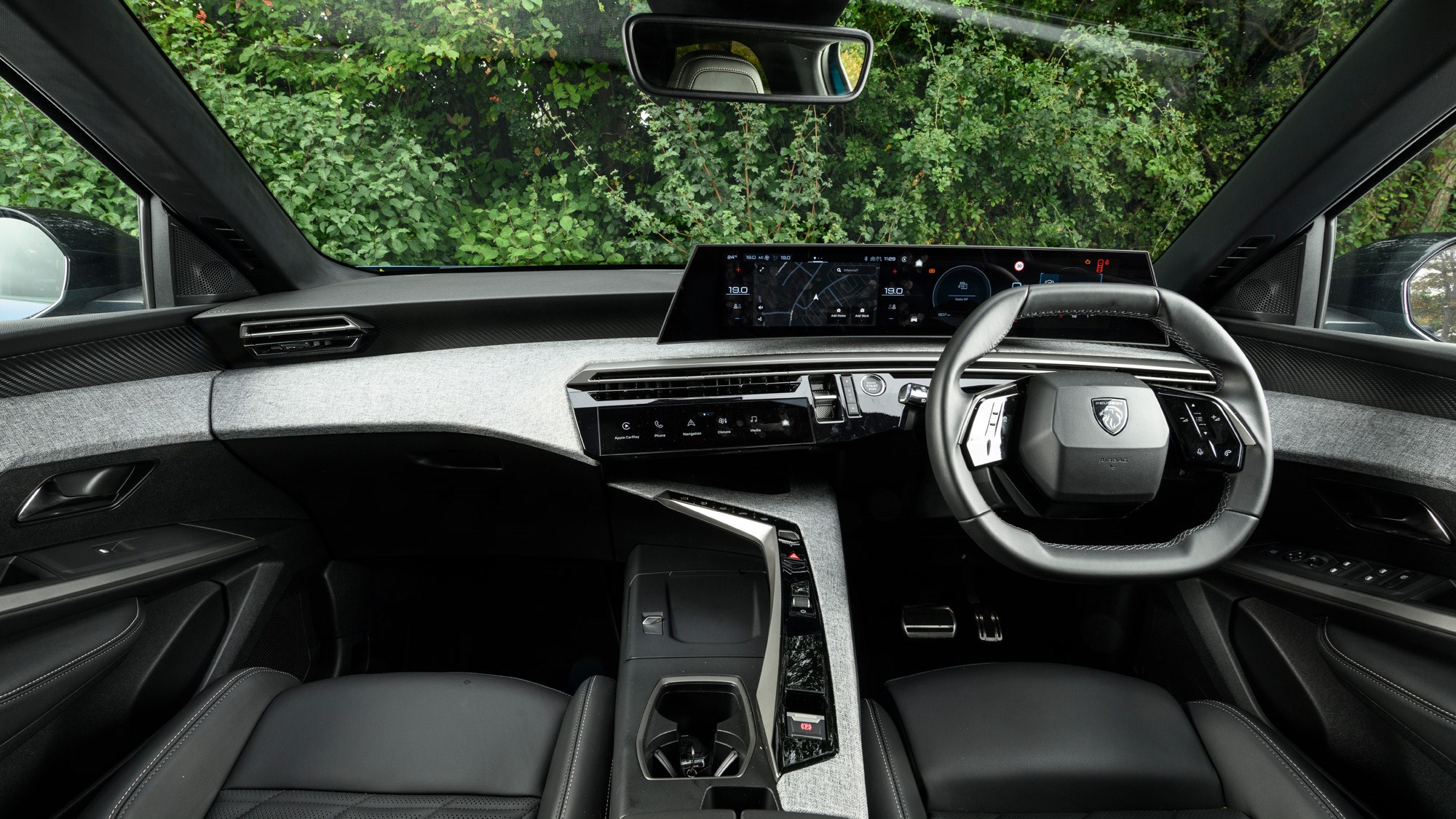
But perhaps the biggest disappointment with the 3008 is its lack of rear space. Cars in this class, such as the Nissan Qashqai and Kia Sportage, are primarily bought by families where spaciousness is a top priority. Peugeot’s designers seem to have forgotten that, with the 3008’s cramped rear seats not offering a great deal of head or legroom, and there are no party tricks like a sliding rear bench like you find on many rivals. The boot is a good size, however, at 520 litres, but the button to open it is positioned on an awkward edge between the boot lip and lower bumper that’s not pleasant to use at all. The boot catch also fell out after shutting it on my 500-mile test car…
Before you buy (trims and rivals)
Choosing a hybrid over an electric e-3008 saves you a considerable amount of money, with the 3008 starting from £34,660 next to £45,850 for the EV. It’s a big saving, though the 3008 is still one of the more expensive cars in this class. A Nissan Qashqai is more than £4,000 cheaper, while even a Volkswagen Tiguan starts from £600 less. Pricing is far closer to premium crossovers such as the BMW X1 and Mercedes GLA.
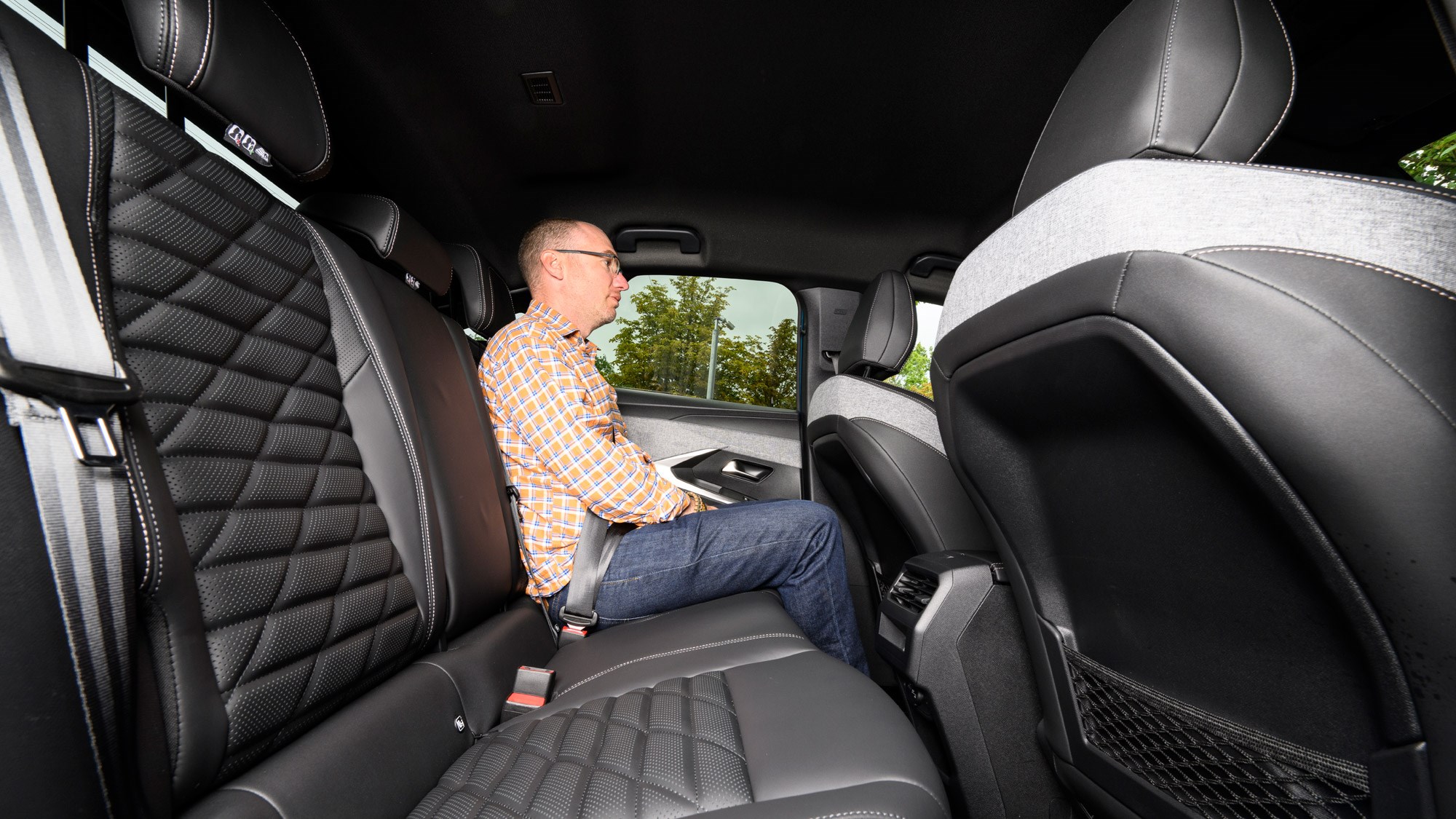
Standard equipment is decent but not ridiculously generous. Entry-level Allure models come with the impressive Panoramic i-Cockpit interior layout, keyless entry, a reversing camera and wireless smartphone charging. The GT trim adds adaptive cruise control, heated front seats, Alcantara upholstery and Matrix LED headlights though are quite a lot more expensive at £38,160.
Verdict
If you buy your car primarily for how it looks, it’s easy to see why you’d like the Peugeot 3008. In a class of cars blessed with design mediocracy, this SUV generally stands out with its stylish exterior and distinctive interior. This new hybrid model is also a significant improvement over the electric e-3008 by being much better to drive and considerably cheaper.
But ultimately the 3008 falls behind the best family crossovers owing to the fact its simply not as roomy or flexible as a vehicle in this class should be. The interior and general design are all just a lesson in style over substance. Peugeot can do better.